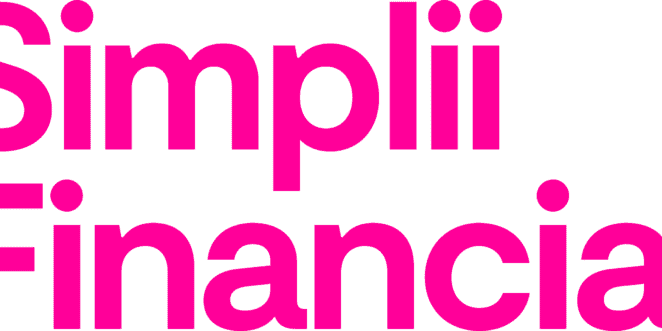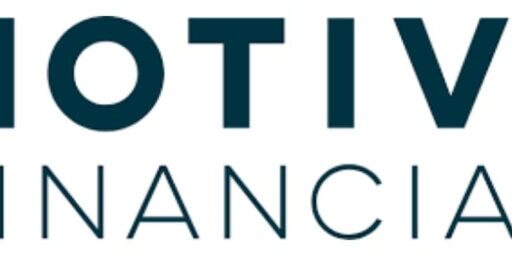When to Buy Dividend Stocks in Canada
Dividend stock investing is a great strategy for those looking to invest primarily in mature, stable companies with a history of spinning off free cash flow.
Whether or not someone chooses to take the dividend payout out of their brokerage account in order to pay for life, or to reinvest any dividend income depends on if they are in their decumulation stage of life (usually retirement), or accumulation stage. Once the big picture of dividend investing has been decided upon, the next step is to choose what dividend stocks to buy and when.
I wrote my original thoughts on when to buy dividend stocks roughly a decade ago – and with my best dividend stocks in Canada article one of the most popular on the site, I thought it was the perfect time for an update.
Dividend investing can mean a couple things. It could include investing for dividend yield or dividend growth. Investing for yield is simply basing purchase decisions on the percentage dividend yield of the stock. The higher the percentage yield, the better. The Dogs of the TSX investing strategy comes to mind for this one, in addition to the Canadian Dividend Kings & Aristocrats.
In my opinion, basing investment decisions on yield alone is a dangerous game. More times than not, an abnormally high yield simply means an unsustainable dividend. When the dividend payouts become too much for the company to carry, dividends are typically cut dragging the stock price with it.
Investing for dividend growth is making purchase decisions based on the history of growing dividend payments over the years. Although the initial purchase yield may be lower, it’s a great strategy for buy and hold investors as it gives raises to loyal shareholders over time. Buying and holding dividend growth stocks is more in alignment with my beliefs and is one of the key components in my dividend investing strategy.
Having explained the two strategies, I use a combination of the two when making purchase decisions. I narrow down the list of strong dividend companies based on a history of dividend growth, but only make my purchase when that particular stock reaches a yield threshold.
How do I determine the yield threshold? By going back through the history of dividend payments and figuring out the average yield over the years. Once that is determined, I usually pick a yield that is above average which then can be converted into a target stock price. From there, I can watch the market (or use alerts) to indicate that it’s time to pick up a new position.
The Process of Finding Dividend Stocks to Buy
1) Create a prospective dividend stock watchlist: Find strong dividend stocks with a history of increasing their dividends over the long term. I like to start my research using three filters; revenue, EPS, and dividend growth over the past 5 years.
2) Look at Revenues: A business is not a business without revenues. What is the difference between a company making growing revenues versus a company showing stagnating results? We are looking for companies with several growth vectors that will ensure consistent sales increases year after year.
3) Consider Earnings: You cannot pay dividends if you don’t earn money. Then again, this is a very simple statement. Still, if earnings don’t grow strongly, there is no point in thinking that the dividend payment will increase indefinitely.
4) Dividends.. Duh: Last but not least, dividend payments are the *obvious* backbone of any dividend growth investing strategy. But I don’t mind the real dollar amounts or the yield, I focus solely on dividend growth. Dividend growers show confidence in their business model.
5) Understand the Business Model: Selecting stocks based on metrics is a good start, but if you don’t understand how the company makes money, you won’t understand opportunities and threats coming down the road. Write down your investment thesis (the reasons why you want to invest in this company, definite its growth potential but also its potential downside).
6) Get Help With the Heavy Lifting: Market fluctuations create confusion and leave you with the impression you will lose your entire nest egg. Then, you read more blogs, watch more videos, and listen to more podcasts. You receive so much conflicting information that you end-up in paralysis by analysis.
Consider the only source of dividend information that I trust (along with my initial research) – Dividend stock rocks (DSR). This is not just a weekly newsletter with stock picks. It’s a program that will help you manage your portfolio and improve your results. You can first read our detailed DSR review.
Safe Bets – Canadian Dividend Stocks To Buy At Any Time
Below is a list of DSR’s most recommend dividend stocks. These have outperformed consistently and you can’t go wrong with investing in any of them.
Ticker | Sector | Div Streak | Dividend Yield | 5yr Revenue Growth | 5yr EPS Growth | 5yr Dividend Growth | Payout Ratio | P/E | |
Fortis | FTS.TO | Utilities | 51 | 3.51% | 5.90% | 5.03% | 4.89% | 74.53% | 20.62 |
Canadian National Railway | CNR.TO | Industrials | 28 | 2.64% | 4.51% | 9.61% | 9.16% | 48.07% | 18.54 |
Canadian National Resources | CNQ.TO | Energy | 23 | 5.29% | 16.41% | 4.76% | 23.03% | 74.30% | 11.28 |
Telus | T.TO | Communications | 20 | 7.61% | 6.22% | -9.43% | 7.04% | 233.03% | 34.49 |
Emera | EMA.TO | Utilities | 18 | 4.34% | 8.06% | -3.33% | 3.22% | 167.81% | 22.64 |
National Bank | NA.TO | Finance | 14 | 3.12% | 10.01% | 12.99% | 9.93% | 40.08% | 14.85 |
Alimentation Couche-Tard | ATD.TO | Business | 14 | 1.04% | 9.32% | 1.83% | 22.77% | 19.58% | 19.75 |
TD Bank | TD.TO | Finance | 13 | 3.71% | 8.84% | 8.53% | 6.04% | 86.14% | 9.70 |
Brookfield Corp | BN.TO | Finance | 12 | 0.52% | 3.69% | -28.67% | -5.59% | 104.65% | 163.00 |
Sun Life | SLF.TO | Finance | 8 | 4.18% | -0.96% | 6.73% | 9.35% | 61.50% | 14.97 |
?????? (Hidden, click for access) | (Hidden, click for access) | ?????? (Hidden, click for access) | ?? | ?.??% | ?.??% | ?.??% | ?.??% | ???.??% | ??.?? |
Is Now the Right Time to Invest In Dividend Stocks?
During times of inflation and stock market uncertainty, like we are experiencing now, dividend stocks are actually a great option.
Historically speaking, dividend stocks perform extremely well during times of inflation. More than 50% of stock market returns have come from dividend stocks while inflation is high since 1930.
So, now could be the perfect time to buy dividend stocks. However, it’s always a good idea to compare how dividend stocks might compare to other options, such as GICs and ETFs.
Dividend Stocks vs GICs
Right now, GIC rates in Canada are higher than they have been in decades. For example, EQ Bank is offering a one year GIC rate of 5.20%. So, how does that compare to investing in a dividend paying stock?
The truth is, it’s not simply a comparison of apples to apples. These are two very different financial products. A dividend stock yield depends on a high number of variables and therefore will result in a higher number of potential outcomes. A GIC offers a bit of a safety net in that you are almost certainly guaranteed a specific return at the end of your deposit term.
All things considered, the earning potential of dividend stocks is higher than GICs for a few reasons. One reason being that with GICs, there is no potential to make capital gains. For example, currently BCE’s dividend yield is 6.33%, which is higher than even the best GIC rate in Canada at the moment. Plus, BCE’s dividend payout has the potential to increase, whereas a GIC rate would not.
Dividend Stocks vs ETFs
If you have been around MDJ for some time, you know about the many benefits of ETFs. There’s great news! There are ETFs specifically made up of dividend stocks, meaning you have the benefits of holding ETFs as well as the growth potential of dividend paying stocks.
For example, BlackRock’s iShares S&P/TSX Canadian Dividend Aristocrats Index ETF (CDZ) has an average total annual return of 6.51%. That’s not bad!
However if you are purely looking at dividend stocks vs ETFs, it really comes down to two things. First is your time horizon. If you have a shorter time horizon, dividend stocks might make more sense. The second thing to consider is whether or not you want cash flow from your investments. If so, dividend stocks would serve you better than ETFs.
If you want the best of both worlds, consider going with a dividend ETF.
To find out more about the Best Low Risk Investments in Canada Right Now, check out our full write up. If you’re interested in more low risk investment comparisons, check out Bond ETFs vs GICs vs High Interest Savings Accounts.
When to Buy Dividend Stocks In 2023
One of my favourite parts of dividend investing is that you do not have to time the market to make money. Enbridge or the Canadian Banks are going to pay dividends no matter what their share price does!
With interest rates looking to increase, dividend investing through Canadian bank stocks is a no-brainer as we pass from 2022 to 2023. There simply isn’t a safer hedge against inflation from what I can see, as banks are known to do well in high interest rate environments.
If rates stay low, you might not get quite the returns that tech growth stocks will generate, but Canadian banks have produced under any conditions the last few years.
For other ultra-safe options in 2023, I’d check out our Canadian dividend kings and dividend aristocrats article. For rock solid companies like that, the classic phrase, “It’s time in the market, not timing the market that is most important,” rings true.
On the opposite side of the spectrum, I’m not nearly as confident about when to buy dividend stocks in the energy sector right now. Sure, oil prices are headed in the right direction, but with such a topsy-turvy world out there, I’d recommend checking out this article about Canada energy stocks first.
The most important thing to remember about when to buy dividend stocks is that you do not need to obsess over the details in order to benefit from the strategy. The simplicity of investing in solid dividend-growing companies in “good weather and bad” is one of the main things that attracts me to it.
Don’t worry about stuff like ex-dividend dates or the latest pipeline court case. Avoid paralysis by analysis, keep an eye on your favourite dividend-growers, and lean on DSR if you need a little help along the way!
I've Completed My Million Dollar Journey. Let Me Guide You Through Yours!
Sign up below to get a copy of our free eBook: Can I Retire Yet?











Hello,
What do you think about:
Equitable Group EQB
Manulife MFC.TO
Brookfield asset Management BAM
Granite REIT GRT.UN
I wonder about the tradeoffs of buying individual dividend stocks vs. something like XDIV for Canada and XDG for international. I often see dividend investors pile into individual companies with high dividend yields, only to get burned later. Perhaps investing in quality dividend companies via an ETF may be a safer route for some.
Thanks Frugal. If one is a new investor/Smith Manoeuvre investor, does this analysis apply? I.e. Should I be waiting for the right share price before I purchase or should I jump in? I want to get blue chip, dividend paying stocks. It seems to me that this is for those who have an established, growing portfolio, isn’t it? Thanks!
Thanks for the article! I am quite new to investing and trying to test this strategy. Am I calculating the average dividend yield correctly?
1) Average all historical closing prices for a year. I am obtaining my data from the historical prices at finance.yahoo.com. Should I pay any attention to the adjusted price?
2) I then divide the annual dividend by the average share price for each year to obtain the average dividend yield for that year.
3) lastly, I average all the calculated dividend yields of the last 5-10 years.
@David, a shortcut is to use ca.dividendinvestor.com which will give you a 5 year average. I sometimes use “bigcharts.com” which has “yield” as one of it’s indicators in “advanced charting”.
Just look at Manitoba telecoms EPS, does not even cover the dividend!
They are waiting to be bought out, surprised its not happened yet.
The company MUST be making a profit. If not you are speculating, not investing.
As a follow up to my post almost a year ago, look at Manitoba Telecom and notice it’s down almost 15% while XDV (a collection of dividend paying stocks traded as an ETF from Barclays) is up about 10%.
In both cases dividends are excluded.
In my early twenties I built up my porfolio through DCA (monthly deductions off my pay-cheque) on an indexed mutual fund. Once I reached $25k (magic number for waiving discount brokerage fees) I converted the portfolio to TD WaterHouse. I am a firm believer in sticking with your strategy, not chasing the latest fad…so after careful consideration I chose the Dogs of the TSX approach…buying the 10 highest yielding stocks on the TSX 60, then selling them and re-balancing after one year (For some reason May 25th is that date).
I do agree that the high yields are not sustainable, but that’s why you re-balance after one year. Typically these stocks (Dogs because they were “beat up” the previous year, thus leaving a bargain price and a high yield) have a run-up in price, which reduces the Yield and knocks them out of the top 10 the following year. Re-balance and repeat each year. One note, I did cheat this year and take 1 REIT (RioCan) and one Income Trust (Liquor World). There are several variations of this approach, one being to spread out your 10 selections amongst 10 sectors…which I like in theory, but there aren’t any real dividend payers in Health Care and some other sectors.
Two negatives that I find are that you are heavily invested in finance and energy, and my trade fees of $29 are not so attractive…especially if I’m selling and re-buying 10 stocks each year. But once I hit $100k those fees will be reduced to $9. I suppose I could find a cheaper trading site, but I am a lazy investor.
If you are interested in reading more about this approach, David Stanley has done tremendous research on the benefits of the Dogs strategy and how it has out-performed the TSX over the past 25 years.
Would you suggest any free screeners for trying to find dividend? I know I have used yahoo’s before but there should be some other ones that are better.
Also, what other factors beside the dividend can you look at to know that it’s a or at least has the potential for a dividend growth?
Thanks for all that you do and share!
Well, I for one know that the Dividend Investment Strategy DOES work! But it takes time and patience, and of course good selection of the proper stocks that usually increase their dividends over time. In fact if you stay with the strategy long enough, your investment income will be beating the overall market returns over most years. And remember, this is actual income (money in pocket), not “just” capital gains which are always nice too. Most companies that increase their dividends will see an eventual increase in their stock price over time (buy and HOLD) as well. How many here have seen an increase in their portfolio’s income this past year? Mine did! By using this strategy faithfully you will get the same results. Learn and DO………………….
I look at a couple of other criteria – payout ratio and overall return. If the payout ratio is too high for the industry (financials don’t have the same acceptable payout ratios as REITs for example which often go above 100%) then it is a no go.
The comment about telcos is a great example for the 2nd criterion. There are a lot of telcos which have nice yields but lousy returns on the stock price itself. Look at Manitoba Telecom – yield is currently over 8% but the stock has a negative return in the last 1, 3 and 5 year periods. You are more likely going to see a dividend cut rather than an increase if the underlying stock price is going down.